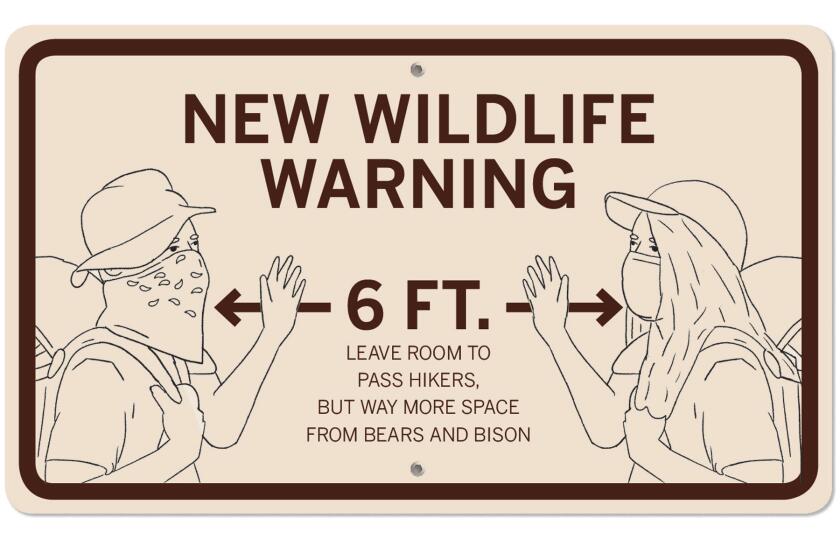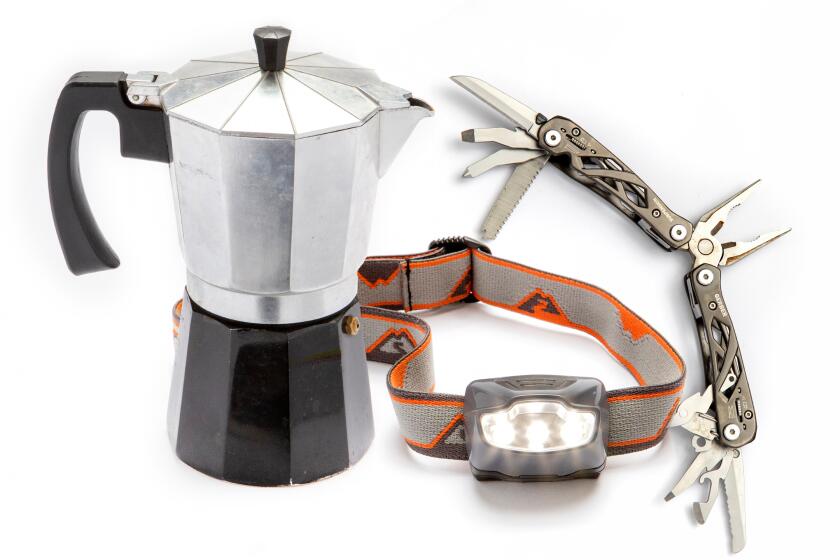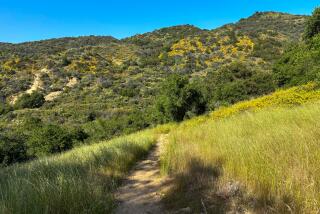What you need to know before your first post-quarantine camping trip

- Share via
Jo Manganello is keeping a close eye on the number of reservations at a campground in the San Bernardino Mountains she hopes to visit with her husband and young son. “Right now, it’s less than 50% capacity,” she said.
The 39-year-old from Glendale has a medical condition that puts her at higher risk of getting COVID-19. Though her doctor signed off on the trip, she’s being extra careful. She changed her vacation plans to visit midweek when campgrounds typically are less busy. And she picked a venue where campsites are spaced “farther apart than I am from my neighbors at home.”
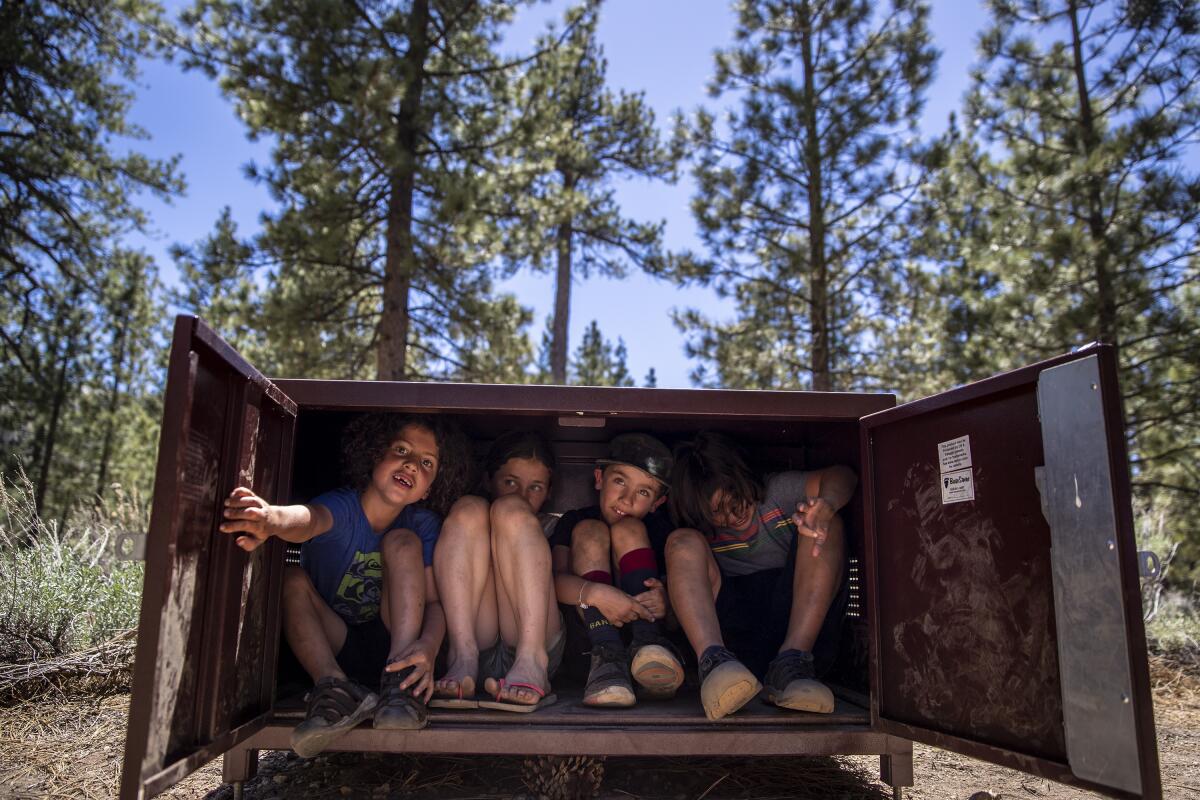
Still, the vacation may be delayed. “I’m watching the campground,” Manganello said. “If it gets too crowded, we may have to move to a different date.”
Get The Wild newsletter.
The essential weekly guide to enjoying the outdoors in Southern California. Insider tips on the best of our beaches, trails, parks, deserts, forests and mountains.
You may occasionally receive promotional content from the Los Angeles Times.
Welcome to camping during the coronavirus pandemic. Cooped-up Americans who were forced to stop traveling in March are turning to nature for equal parts hope and escape. The long-awaited opportunity to breathe mountain air and pitch a tent under the pines provides a familiar grounding, a temporary reprieve from the uncertainty the deadly virus has wrought.
Scott Cory operates Ventura Ranch, a recently reopened KOA campground in Santa Paula. Earlier this year he was building a labyrinth of boulders at the 75-acre site — “It’s a mile into the center and back out” — where first responders and others could heal from 2017’s devastating Thomas fire.
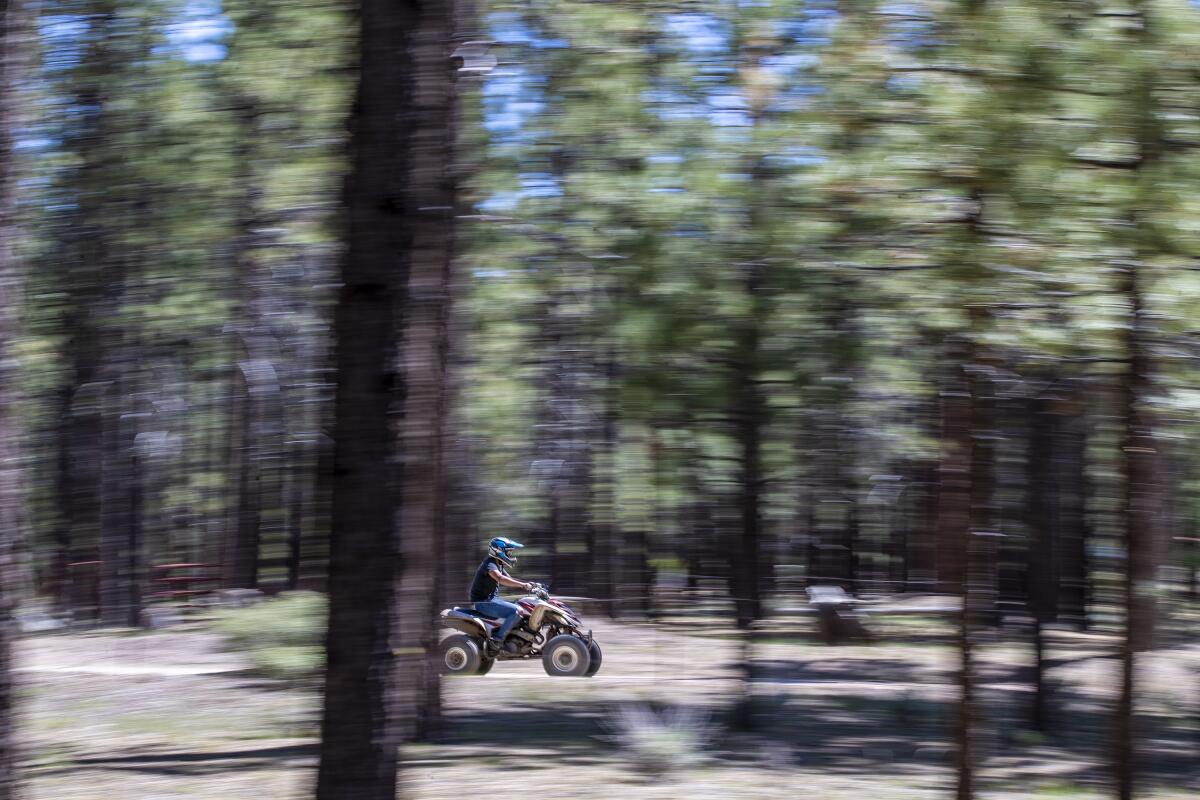
Then the pandemic hit, making the outdoor maze even more relevant. “People want to reflect, relax and enjoy and know that things are getting better,” he said.
Still, being outdoors doesn’t mean you can forget about spreading or contracting COVID-19. Every campground will have a set of rules designed to keep visitors and employees safe and healthy.
As of mid-June, campgrounds and RV parks in California were allowed to reopen as long as they comply with 21 pages of detailed state guidelines and receive permission from public health officials in their county.
As travelers started to trickle back, Ventura Ranch, which has 148 campsites, opened cabins and spaces for RVs. Now more campsites have opened, except for tent campers, with limits on capacity.
Yes, coronavirus guidelines from federal and local public health officials still apply in the outdoors. But not everyone gets that.
Cory also has reopened some of his plusher camping options, such as tepees and safari tents, all of which have beds and other amenities. But he knows opening the on-site playground may take more time.
California state guidelines say pavilions, communal fire rings, public-use camp kitchens and amphitheaters should remain closed. Operators should tape off benches, picnic tables in common areas and seating around fire pits to discourage visitors from gathering.
And Cory has his own set of rules, including limiting sites to no more than six people, who should be from the same household. Still, he sees camping making a big rebound this summer.
Get The Wild newsletter.
The essential weekly guide to enjoying the outdoors in Southern California. Insider tips on the best of our beaches, trails, parks, deserts, forests and mountains.
You may occasionally receive promotional content from the Los Angeles Times.
“Existing campers and new campers are seeing how safe it is,” he said. “It’s easy to social distance in the outdoors. Plus it’s a good deal and close to home. [Travelers] want to go back to somewhere that’s safe, as opposed to trying a new travel adventure.”
Recent trends bear that out.
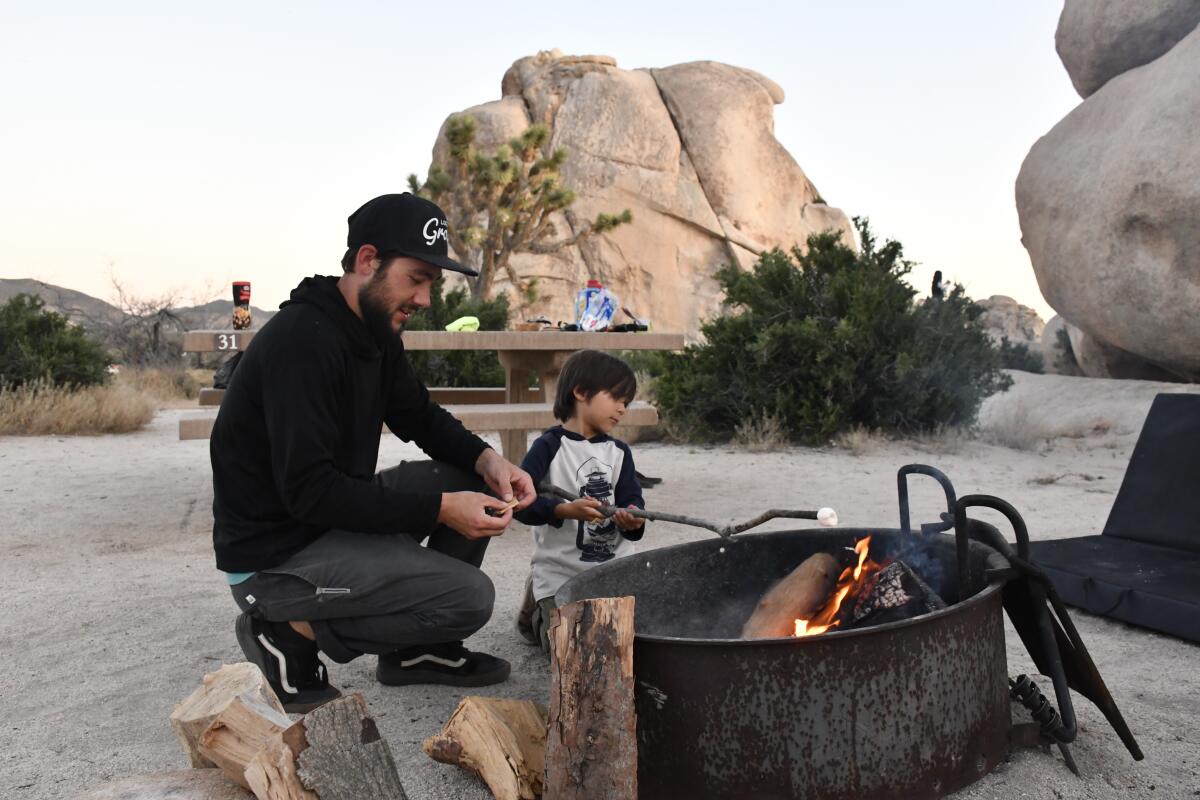
A KOA report based on surveys in April found that almost half of leisure travelers who canceled their vacation plans now say they want to camp. And a third of travelers — especially millennials (ages 22 to 38) and Gen Zers (who top out at 21) — were interested in camping for the first time.
“When this hit, we had a ton of cancellations just like every other business,” said Toby O’Rourke, KOA’s chief executive. “Right now, July is holding strong … as are [reservations] into the fall. We’re very hopeful to have KOA campgrounds open by July 4.”
Dyana Kelley, president of CampCalNow RV Park and Campground Alliance, in early June was worried about the toll the pandemic would take on her association’s 1,200 members. “I think if we don’t get open pretty soon, we’re going to see a significant decline in the number of parks available next year,” she said. “These smaller parks and campgrounds can’t continue to survive this.”
Kelley believes staff at parks and campgrounds could be the “beta test and the educators” that pandemic travelers need. “So many people are coming to these communities uneducated,” she said. “We can be the ones to say, ‘When you come to our community, here’s what you can expect.’”
What will be different
Though rules vary, most campgrounds say multifamily gatherings or big parties with friends won’t be allowed. Some limit the number of people who can stay in individual and adjoining sites. The idea is to stick with people in your household or family bubble, and that goes for backcountry campers on public lands too.
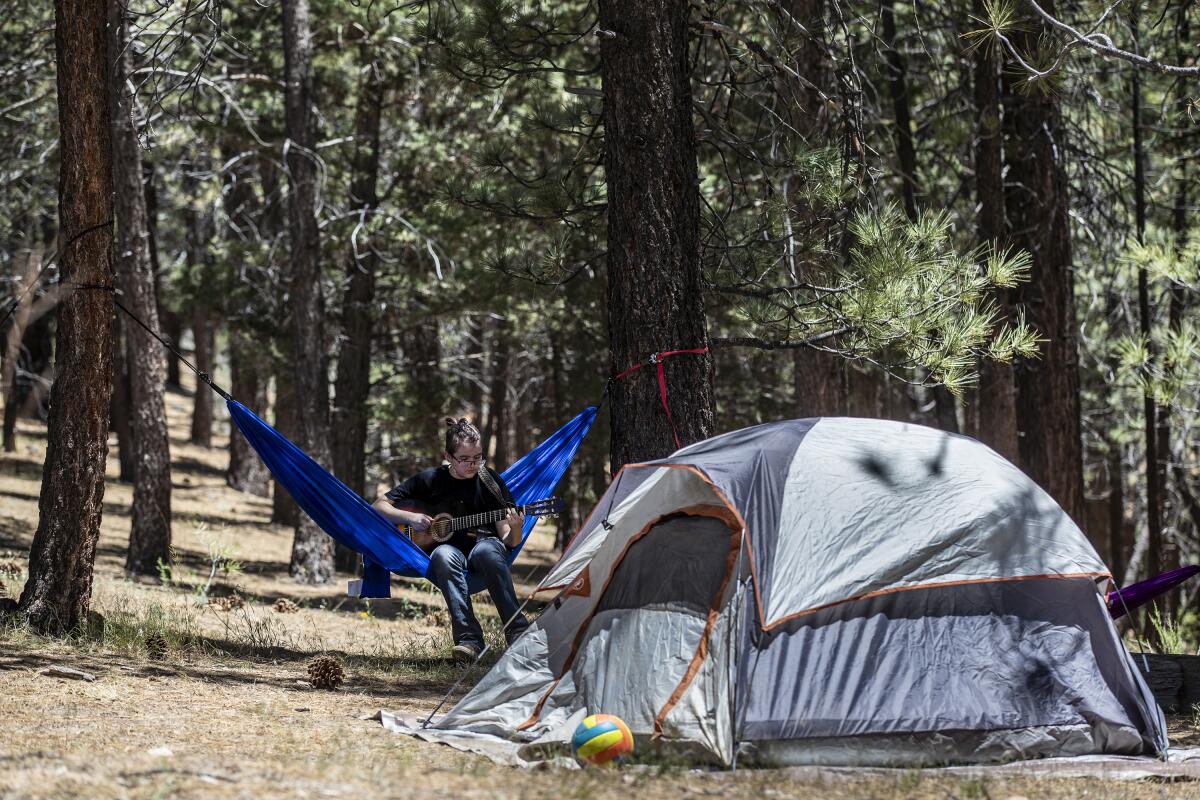
Those pickup games of soccer or dodgeball with new friends? They’re out too, along with activities that bring you in contact with strangers. Pools and playgrounds, popular fixtures for families at privately operated campgrounds, may be closed.
Campers and hikers should social distance and frequently wash their hands or use hand sanitizer.
Even if you have a reservation at a campground you know, check the rules before your visit and read about the site’s sanitation precautions. Most tell travelers about how frequently restrooms, laundry rooms and other common areas are cleaned and what types of disinfectants are used. Look for information posted online by the campground or its reservation provider or call ahead.
For camping beginners, here’s a checklist of vital gear besides a tent, stove and sleeping bag, of course.

When can we go?
California remains under a stay-at-home order that asks residents to avoid nonessential travel, which makes it hard for those who need a break in the outdoors. The best option is to plan a late summer trip — make a camping reservation and check out your gear — until things change. The good news is that once limits are lifted, campers will have more options near and far as more sites reopen. In Southern California, campgrounds in San Bernardino National Forest, which includes Big Bear Lake and Lake Arrowhead, as well as backcountry sites in the Angeles National Forest north of L.A. have reopened.

Yosemite National Park started its phased reopening June 11 by allowing access to the backcountry (for those who have permits) and opening just one Yosemite Valley campground at 50% capacity. Joshua Tree National Park opened its campgrounds in time for the Memorial Day weekend, and they remain open, though high desert temperatures may keep many away.
California State Parks also has reopened campgrounds at more than 25 parks, including Point Mugu State Park in Malibu and El Capitan State Beach in Santa Barbara.
More to Read
Sign up for The Wild
We’ll help you find the best places to hike, bike and run, as well as the perfect silent spots for meditation and yoga.
You may occasionally receive promotional content from the Los Angeles Times.
